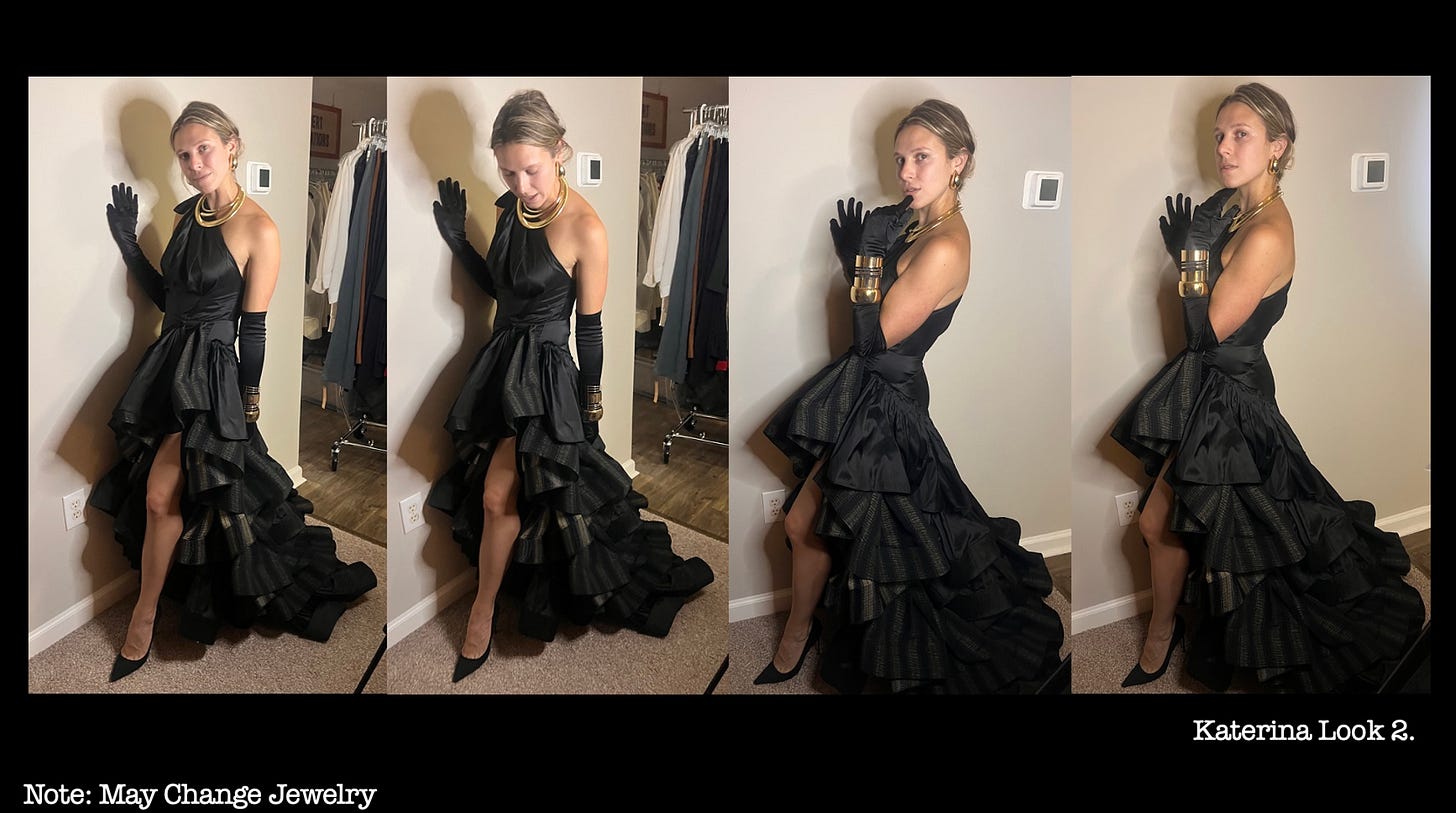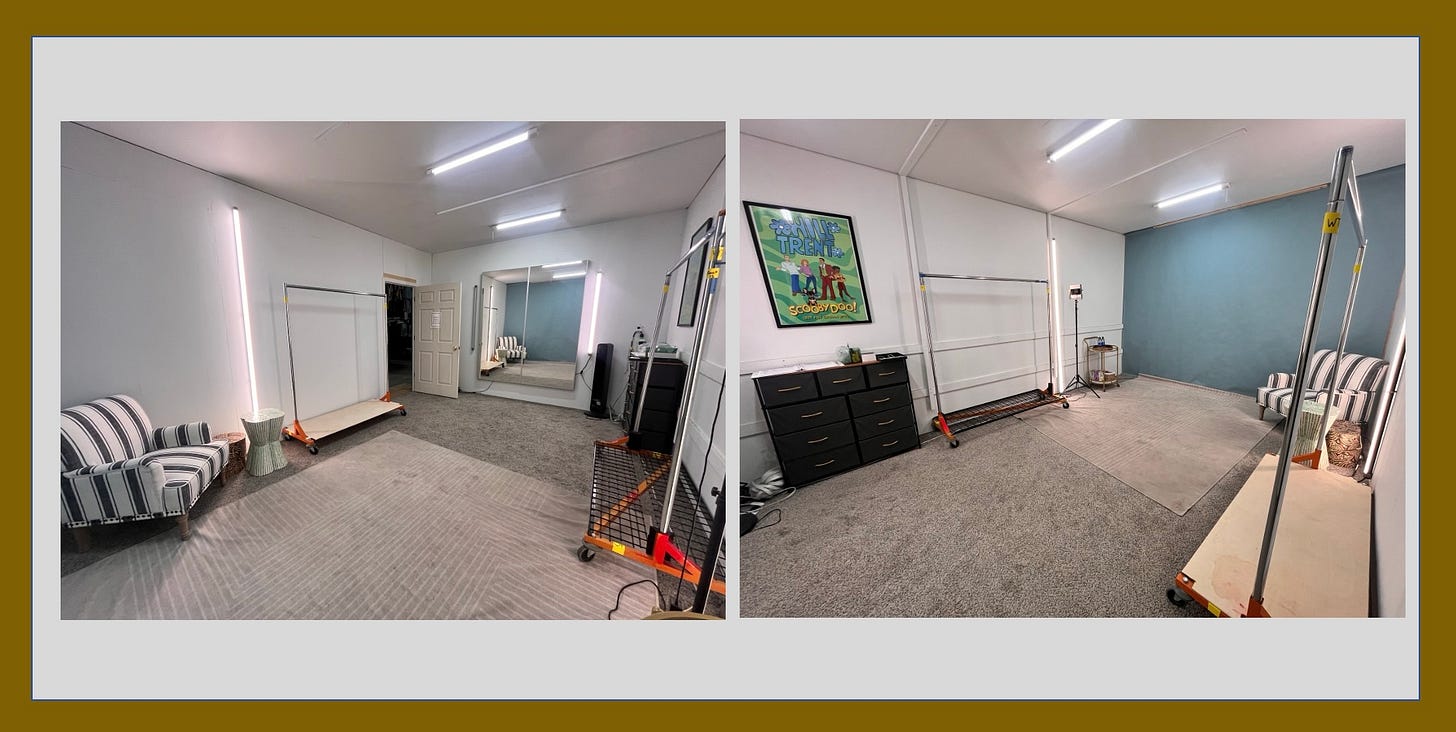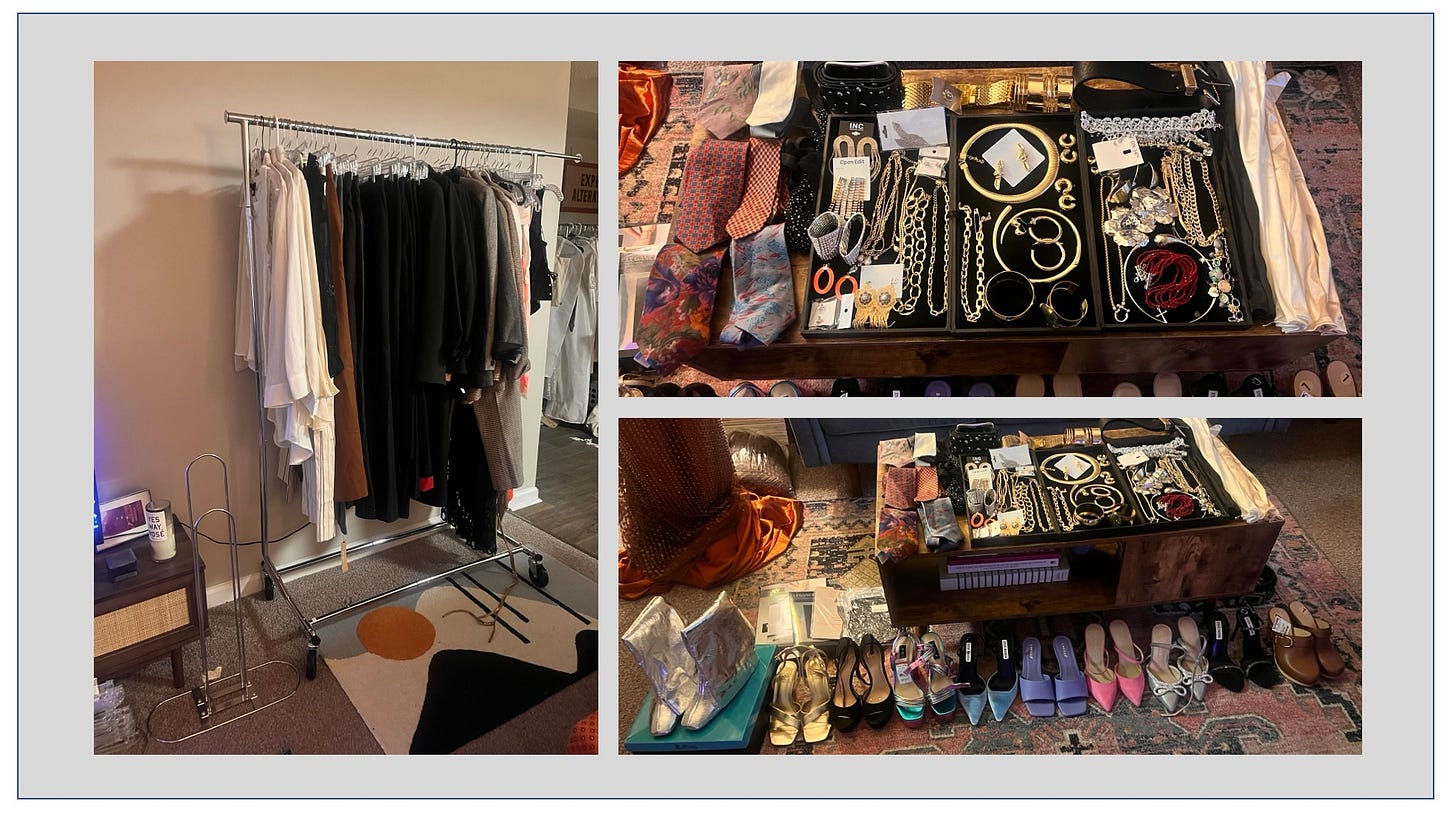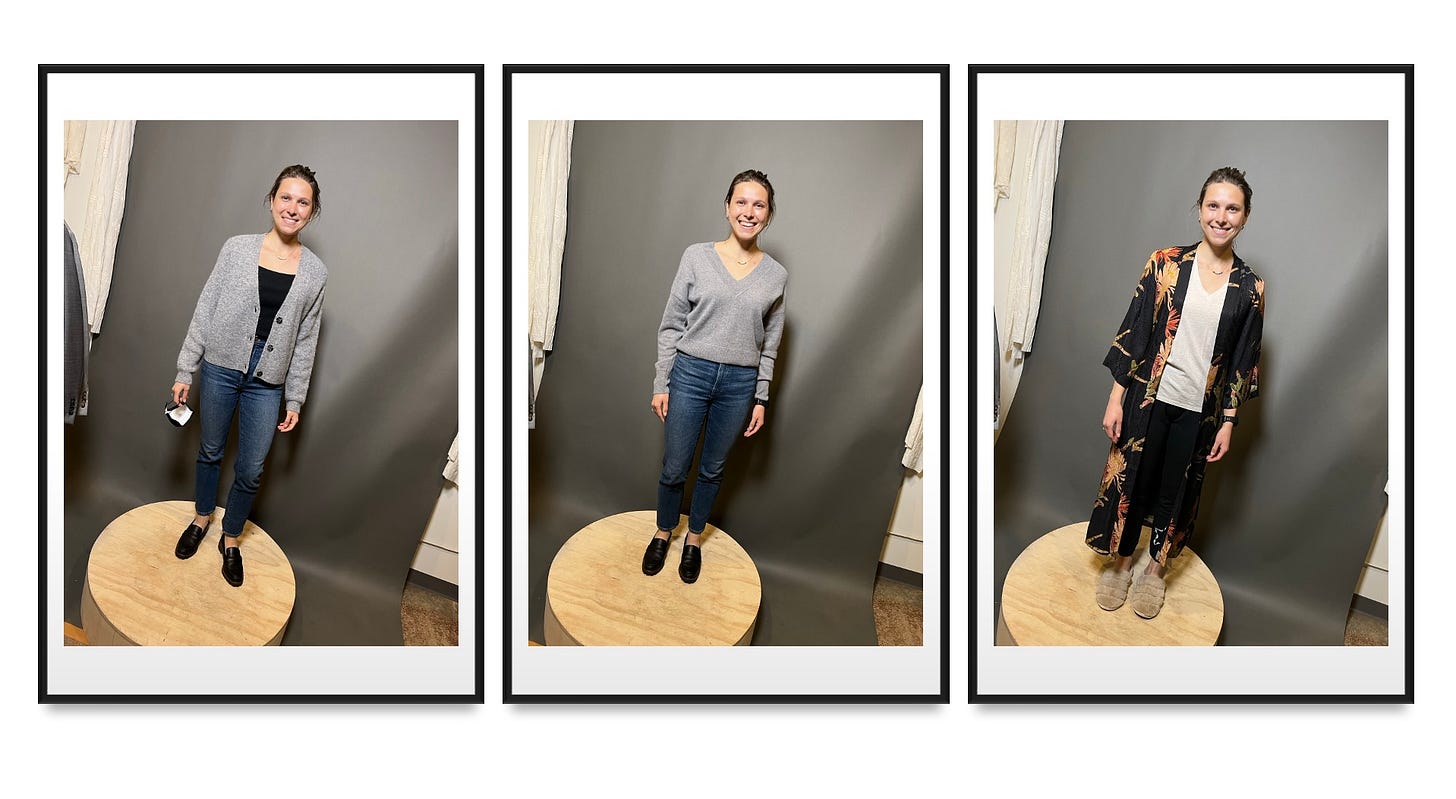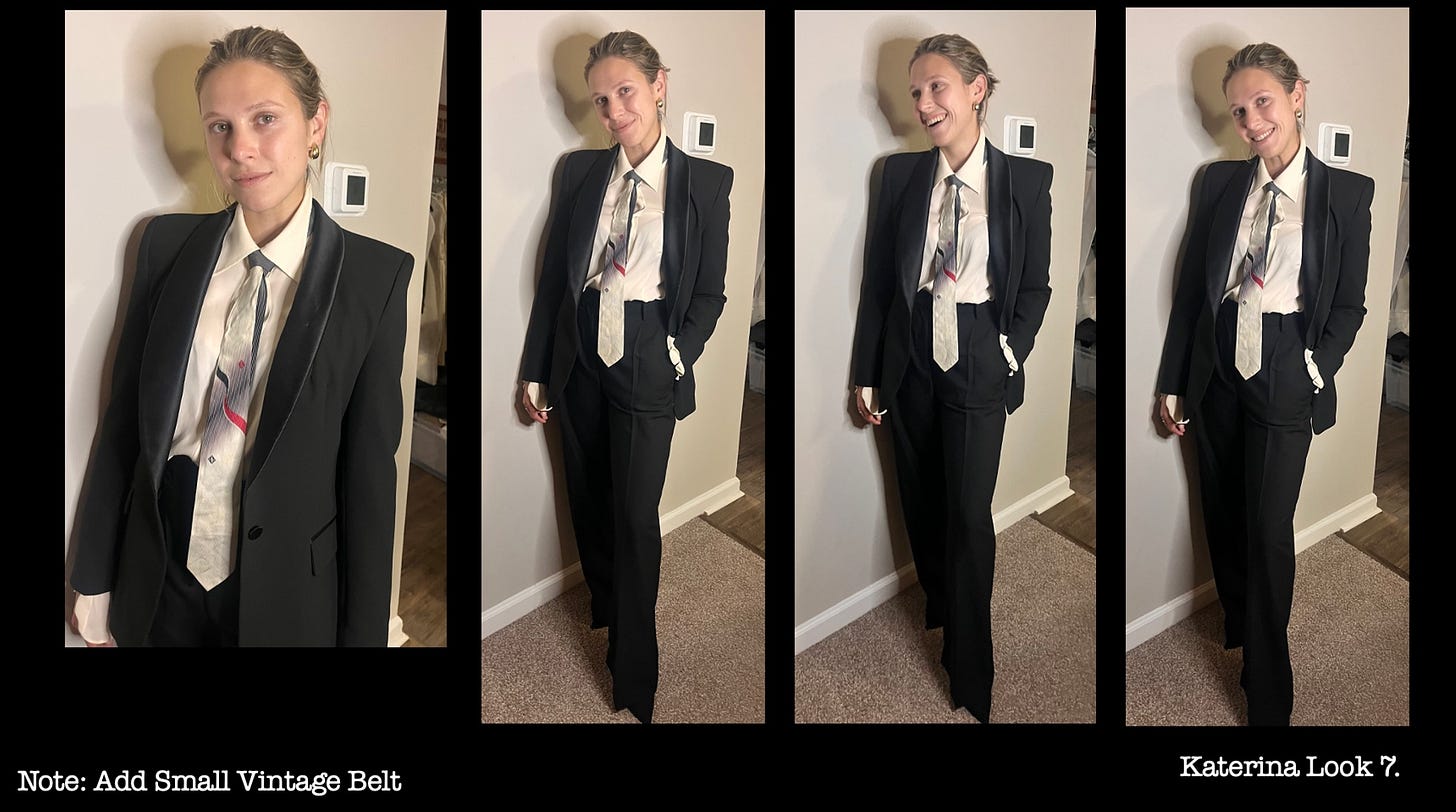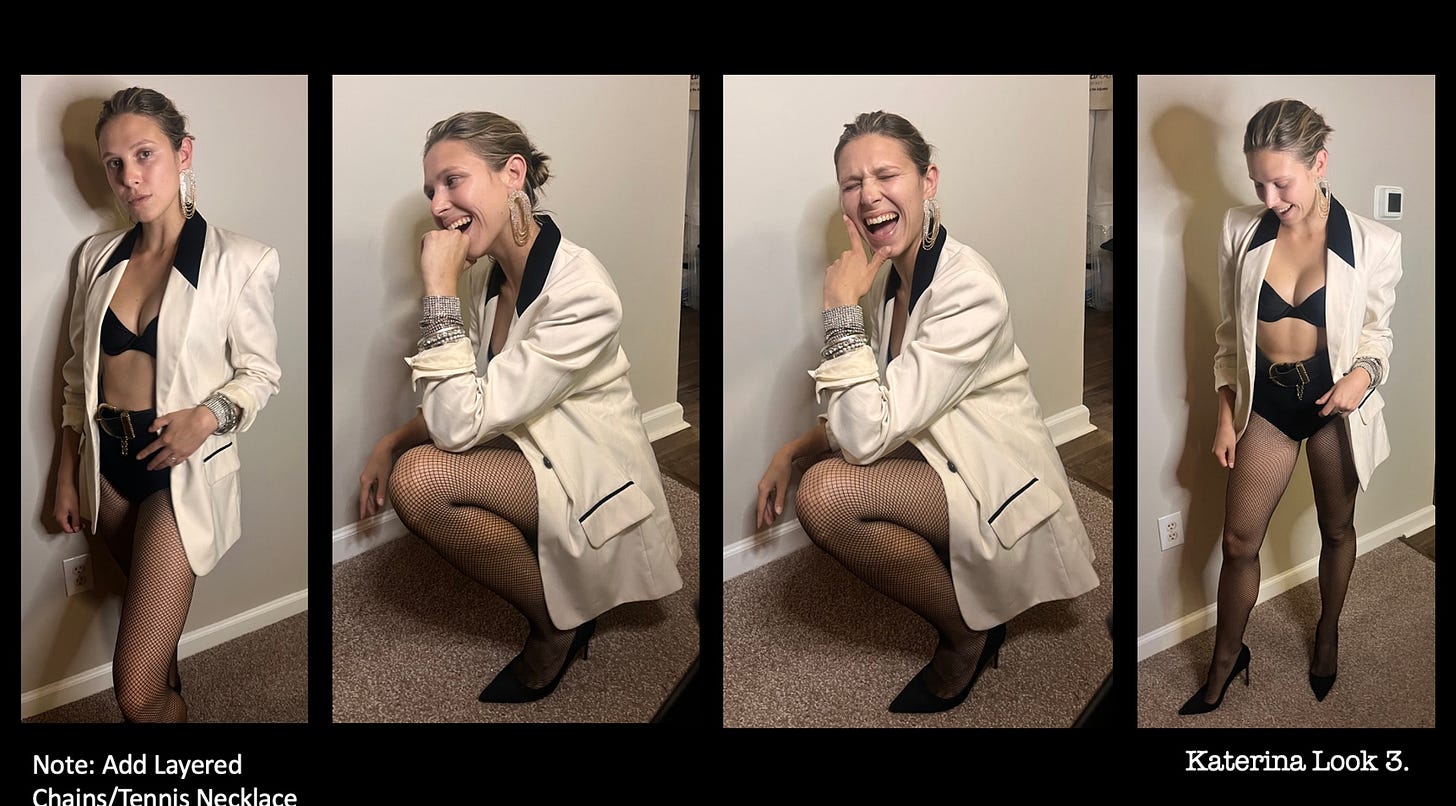The Designer Perspective with Sylvia Fuhrken
Whenever I start breaking down the process of what it actually takes to get a costume on camera or on stage, people are shocked with how many stages the costume team actually goes through. I cannot stress enough how much time, thought, and energy goes into choosing pieces for a costume for a character. So much labor goes into what even appears as the simplest costume, but we work so hard to achieve that level of ease a costume can seem to an audience. I love every part of the costume design process, and I take so much joy in each step, knowing that I am one step closer to achieving my vision. But to me, the most important step of costume design is the fitting with an actor. This is when all the planning, research, conversations, and shopping, come together to create the character you have been so meticulously planning. This is where the real ideas come to life, where the collaboration happens between actor and designer. In a fitting, you discover ideas you could have never dreamed up on your own. The garments come to life. The actor starts breathing life into the costume.
The Fitting Room:
A fitting space is very important. You are creating an environment that feels comfortable, safe, workable, and private for the actor and designer to work. The key elements to a great fitting room are good lighting. This is vital so that the true colors of the clothing can be represented correctly when building an outfit. You also want a good, neutral colored backdrop to take photos. Such as, when the photos are passed around to producers and directors, there is no noise from a messy background. There is also a good full-length mirror that doesn’t distort the body. Racks on the side full of all the clothing options. A table for accessories and jewelry, all laid out, so it is easy to grab. A chair or sofa for the actor to sit and lay their personal belongings on. A comfortable rug in a neutral color warms up a space. Sometimes it is nice to add some décor touches like a plant or candle or a nice lamp and pillows on the sofa. There is always water and some snacks because some fittings can be very long and laborious, and it is important that food and water is available. And then neatly tucked in a corner are usually drawers full of fitting supplies, pins, tags, measuring tapes, sharpies, undergarments etc. And then of course the most important part of the fitting – the clothes.
Setting Up a Fitting:
When setting up a fitting, there is a certain order and way you need to set up the racks of clothes to make it work efficiently and effortlessly. The clothes start in the order of what goes on the body first to what would go on last. We call it inner to outer. For example, the rack starts from left to right with the undergarments and ends with coats. I think one of the most important parts of a fitting is the undergarments – making sure you have the right undergarments ready to go to create the right foundation for the clothing. Actors are usually coming straight off an airplane and walking right into a fitting and are wearing comfortable, soft clothing, so we need to be prepared to have every option available that can transform them. Another thing we do to prep the clothes for a fitting is we iron and steam the clothes to be wrinkle free. We also unbutton any buttons, so it is easy to get clothes on and off hangers to keep the fitting moving as quickly as possible. We also have a copy of the script and also a document that we call “the character change breakdown.” This outlines the changes the actor has in the project and helps create a roadmap for the fitting.
Language of a Fitting:
A fitting is a very vulnerable process. You are usually meeting the actor for the first time. It’s wild to be like: “hi nice to meet you. Okay, time to take off your clothes.” There is a lot of trust and respect that is needed in this space. Keeping the energy even keeled, comfortable, and easy going is a large part of a costume designer’s job. You do not want to create anxiety or negative energy with excessive talking, loud conversation, or bringing up topics that could cause an upset. My advice is to strike a balance between pleasant small talk, conversation about the clothing and character, and casually discuss the film project. Designers have their assistant designer in the fittings with them, and these ACD’s are the hands in the fitting, helping the actor dress and undress, listening and paying attention to the designers cues to anticipate what they want. There is a lot of silent communication between designer and assistant. You know very quickly something is not working whether it is the fit or it doesn’t work for the character. As a designer, you find language that helps the fitting move on without pointing out the garment is not working. You never speak about an actor’s body in the clothing. If you feel like a piece of clothing is not working, you make it about the character and the color story rather than the fit. All brands fit differently, so it is important to have multiple sizes in one item of clothing in case the brands are not true to the sizes they state.
Final Product:
The fitting comes to an end when you feel like you have found the outfits you want for the story arc. The clothes are pinned and ready for alterations. The pictures are taken and ready to be sent off for approval. I learned early on in my career that the best thing you can do as a designer is to be flexible and to kill your darlings. Not every fitting is successful, but most are if you are prepared, and you listen and pay attention and articulate what you want and need while also accommodating an actors’ wants and needs. It is a delicate balance, but it is a beautiful part of the process.
The Actor Perspective with Katerina Eichenberger
As an actor, I adore the costume, hair and makeup departments. One, because they tend to be kind, fun, supportive and ready to uplift their actors. And two, they help bring the character to life.
Going to a fitting is always exciting for me. It’s a chance to collaborate with the costume designer and understand how they view my character and arc through clothing and my body type.
As an actor, I like to show up with:
· Clean clothes
· Clean undergarments
· Clothes that are easy to take on and off
· A good attitude and,
· Thoughts on how I think my character might dress
I mention clean clothes and undergarments because it’s respectful, and they will likely return clothes that don’t fit or work for the character. You also don’t want to ruin the clothes or make anyone uncomfortable especially in the tight space you’ll likely be in. It’s simple, but somehow, not always done.
A good attitude is vital for two main reasons:
1. The costume designers work so hard. To deal with someone difficult makes their (and everyone’s frankly) job harder. Film and theatre are collaborative art forms. You must learn and try to be on the same team with all the departments. I deeply believe if everyone is invested in the character the way you are, the better it is for the project.
2. You want to come in with a good attitude about yourself as well. I say this as someone who struggles with body image, and it is easier said than done. But if you are insecure with how you look, nothing will feel good, and it takes away from the main point which is to think about what works for the character not what works for you. This is the time to take yourself out of it, no matter how complicated that may seem.
Finally, I like to think about how my character might dress before the fitting. I don’t recommend coming in with firm decisions with no wriggle room because that won’t help you, but ideas do help the process move forward. If you try on an outfit and it really feels contrary to your character, you can raise it with the costume department, and they can explain where they are coming from. Sometimes they agree, sometimes they help you see something about the character you didn’t see before. It’s a win win (if you do it with kindness and respect for their work). And remember, costume designers are people, so if there is a rude costume designer, that’s not on you. Respect yourself too but generally, they are good people, and they want you to win so you should want them to win too. They should never comment on your body negatively!
Finally, when you are getting your picture taken so that the designer can send the fitting photos to the producers/directors, make sure to smile and bring life to the picture. Your excitement about an outfit will be contagious. If they see you excited, more often than not, they will be excited too.
Sylvia and I met back in February of 2022. She was fitting me for the show Monarch and we hit it off. She was new in town and there was an ease between us. We decided to meet up and I am so glad we did because of the collaboration and friendship that has grown between us. I remember that fitting so positively because I felt safe, joyful, and fun and saw my character through a variety of lenses thanks to the clothing.
I am endlessly grateful for the costume designers who show up for me as an actor and I show up for them. And shoutout to Sylvia who always makes me feel great when I am in the room with her.
Fittings with Katerina for Katerina + Sylvia
The fittings that Katerina and I have for our project are much more casual. They are in my living room or in her guest bedroom at her house. I still try to make a comfortable atmosphere and have music playing and the clothes hung up and all the shoes and jewelry laid out for easy access. Our fittings are very fast and very collaborative. Katerina and I first met each other in a fitting room. I was an assistant designer on a TV show and she was coming in as a day player. The designer was busy on set, so I did her fitting for the episode. We met and immediately hit it off. It is wild to think that three years ago, chatting in that fitting room and talking about grabbing coffee led us to this special friendship of art making and collaboration. It made me love the fitting process even more than I do now.
Thank you to Elisa Fuhrken for Editing




